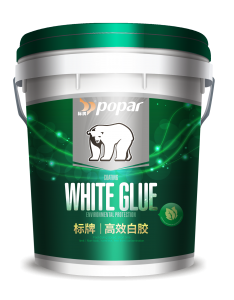
Choosing the right type of white glue for your project can be daunting, given the variety of options available. This guide will give you insight into the different types of white glue and their applications, along with tips on how to choose the best one for your project.
1. Traditional white glue
This water-based adhesive, also known as PVA (polyvinyl acetate), dries clear and is ideal for porous materials such as paper, cardboard, fabric, and wood. It is non-toxic and easy to use, suitable for both adults and children.
2. White latex
With a higher concentration of latex than traditional white glue, this type provides a stronger bond and increased resistance to water and heat. It is best for projects that may be exposed to moisture or require high strength, such as woodworking projects, furniture repairs, or outdoor installations. It can also bind materials such as metal, glass, and ceramics.
3. White wood glue
Designed specifically for woodworking projects, this glue has a stronger bond than traditional white glue and contains resins that provide greater flexibility and impact resistance. It sets quickly and is ideal for joining wood pieces, whether for furniture construction or other woodworking applications. It is not suitable for nonporous surfaces such as metal or plastic.
4. Multi-purpose white glue
All-purpose white glue is an adhesive that can handle a variety of materials and surfaces. It combines the best properties of various types of white glue and provides good bond strength on both porous and nonporous materials. It is available in liquid, gel, or spray form and is commonly used for general home repairs, crafting, and DIY projects.
5. School glue
Washable white glue, also known as school glue, is non-toxic, easy to clean with soap and water, and dries clean. It is best for lightweight materials and paper-based crafts.
6. Carpenter's glue
This type is specifically designed for woodworking projects and is ideal for bonding wood together. It creates a water-resistant, strong bond when it dries and comes in different forms, such as yellow glue, polyurethane glue, and epoxy glue. Yellow glue is most popular for woodworking projects.
7. Fabric glue
Textile glue, also known as fabric glue, is designed for use on fabrics. It is ideal for repairing lips and tears in clothing or attaching embellishments to fabric surfaces. It is water resistant, dries clear, and some varieties are machine washable.
Here are some tips for choosing the right type of white glue for your project:
1. Material compatibility
Make sure that the glue you choose is compatible with the materials you plan to bond with. Different white glues have specific properties that make them better suited for certain materials. For example, traditional white glue works well on paper and fabric, while white wood glue is suitable for gluing wood.
2. Set time
Consider the curing time of the glue you use. Some glues dry faster than others, which is beneficial for projects that require quick assembly. Conversely, slower-drying glue may be better for projects that require time to adjust and align materials.
3. Strength and durability
Assess the strength and durability requirements of your project. If you need a strong adhesive that can withstand heavy use, choose a stronger adhesive such as white latex or white wood glue. All purpose white glue provides decent strength for most projects.
4. Environmental considerations
If you work on outdoor projects or require waterproofing, make sure the glue you choose is suitable for such conditions. In such cases, white latex or white wood glue is preferred due to its resistance to moisture and heat.
5. Surface consideration
When choosing a type of white glue, consider the surface on which you will work. For wood, carpenter glue creates a strong bond that can withstand elements. For fabrics, fabric glue is the best option because it is designed for use on that specific surface.
6. Check the drying time
Different types of white glue will have different drying times. This is essential, depending on your project needs. Some types of glue dry quickly, while others may take several hours or even days to dry. If you 're working on time-sensitive projects, choose glue that dries quickly.
7. Consider toxicity
While most white glues are relatively safe to use, some types may contain harmful chemicals. If you work in an enclosed area, choose non-toxic glue or work in a well-ventilated area.
8. Look at consistency
The consistency of the glue you choose can also be a crucial consideration. For example, if you are working on a vertical surface, choose thicker glue that won't drip or run. Alternatively, if you work on a horizontal surface, thinner glue that spreads easily may be better.
To sum up, selecting an appropriate white glue for your project requires considering several factors, including environmental conditions, material compatibility, strength, durability, surface type, drying time, toxicity, and consistency. By carefully considering these factors, you can ensure the success of your project and confidently choose the perfect adhesive for your needs.
Guangxi Popar Chemical is one of the top three coating manufacturers in China, and is willing to provide you with high-quality services and one-stop solutions.
Choose popar paint choose high standard
Web:www.poparpaint.com
E-mail: jerry@poparpaint.com
Post time: Jun-30-2023

